Spring flowers are exploding across Iowa. If you’re out in the woods this coming week, expect to see plenty of violets, spring beauties, sweet William, and littleleaf buttercup or larger buttercups. If you’re lucky, you may see some bellwort or Jack-in-the-pulpits too. Toothwort and Virginia bluebells are fading in my corner of central Iowa, but sweet Cicely and May apples (umbrella plants) are starting to bloom, and buds have formed on wild geranium and Virginia waterleaf.
Today’s featured flowering plant is a shrub native to much of the U.S. east of the Rocky Mountains. In Iowa, it usually blooms in April or May. Missouri gooseberry (Ribes missouriense) plants produce fruit that is sour but edible for humans. However, it’s a challenge to harvest the berries before the birds pick the bushes clean.
After the pictures of Missouri gooseberry, I’ve enclosed a couple of shots of another shrub you are likely to see flowering in Iowa woods now. Unfortunately, those sweet-smelling honeysuckle plants are considered invasive.
This post is also a mid-week open thread: all topics welcome.
The Minnesota Wildflowers and Illinois Wildflowers websites provide botanically accurate descriptions of Missouri gooseberry foliage, flowers, and fruit. Don Kurz’s book Shrubs and Woody Vines of Missouri says this plant is also known as wild gooseberry and typically grows to approximately 3 feet tall and up to 6 feet wide.
According to John Pearson of the Iowa Department of Natural Resources, the two subgroups in the genus Ribes are gooseberries (with prickles on stem) and currants (no prickles on stem). To my knowledge, I haven’t seen wild currants. Gooseberry bushes are plentiful in wooded areas of Windsor Heights. The plants don’t like full shade but thrive in “mesic to dry open woodlands, savannas, woodland borders, thickets, powerline clearances and small meadows in wooded areas, abandoned fields, and partially shaded fence rows.”
The Illinois Wildflowers page notes,
Young branches are green, but older branches become grey or brown and woody. The branches have two different kinds of thorns: large straight thorns (about ½” or longer) that are reddish brown and small straight thorns (¼” or less) that are brown. The large thorns occur in bunches of 1-3 where the petioles of the leaves occur (or used to occur), while the small thorns are abundant on the larger branches. However, smaller branches may lack small thorns altogether.
Here are two views of Missouri gooseberry stems, leaves, and thorns. Note the green and brown branches.
Gooseberry flowers are small and challenging for me to photograph, but these shots give you an idea:
Gooseberry bushes attract many kinds of pollinators, especially bees. A bee was buzzing around one of the days I was photographing, but didn’t hold still long enough for me to get a good shot. Here’s a closer view of the flower:
Not the best picture of the gooseberry, but sweet William (visible near the lower left corner) is a welcome sight every spring.
Fruits are developing on this Missouri gooseberry. The green berries will turn reddish purple and then almost black as they ripen–if the birds don’t eat them first. A related species, Prickly gooseberry (Ribes cynosbati) produces berries with sharp spines embedded in the fruit. It’s much less common in our area than Missouri gooseberry.
The fruits stand out more against the tree trunk in the background:
Honeysuckle flowers (pink blossoms are also common):

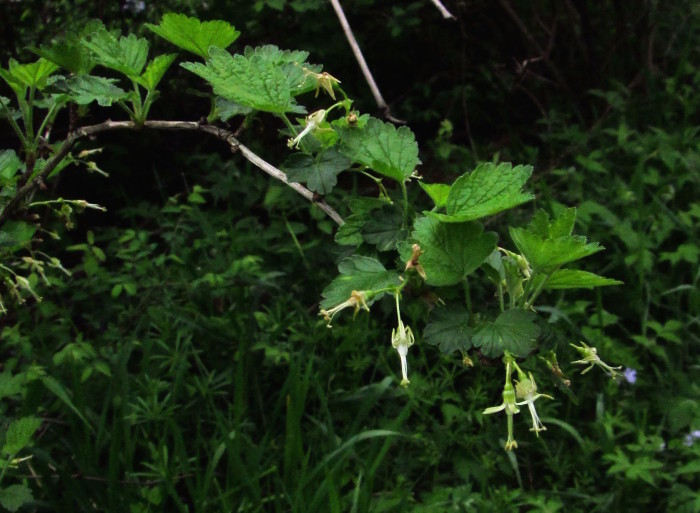
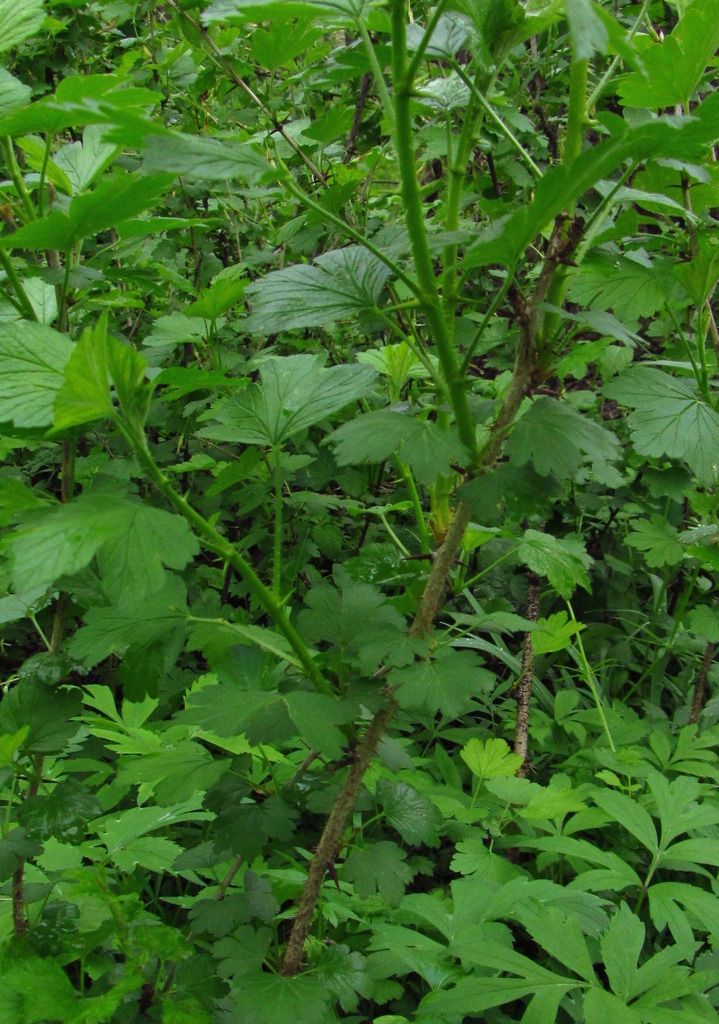

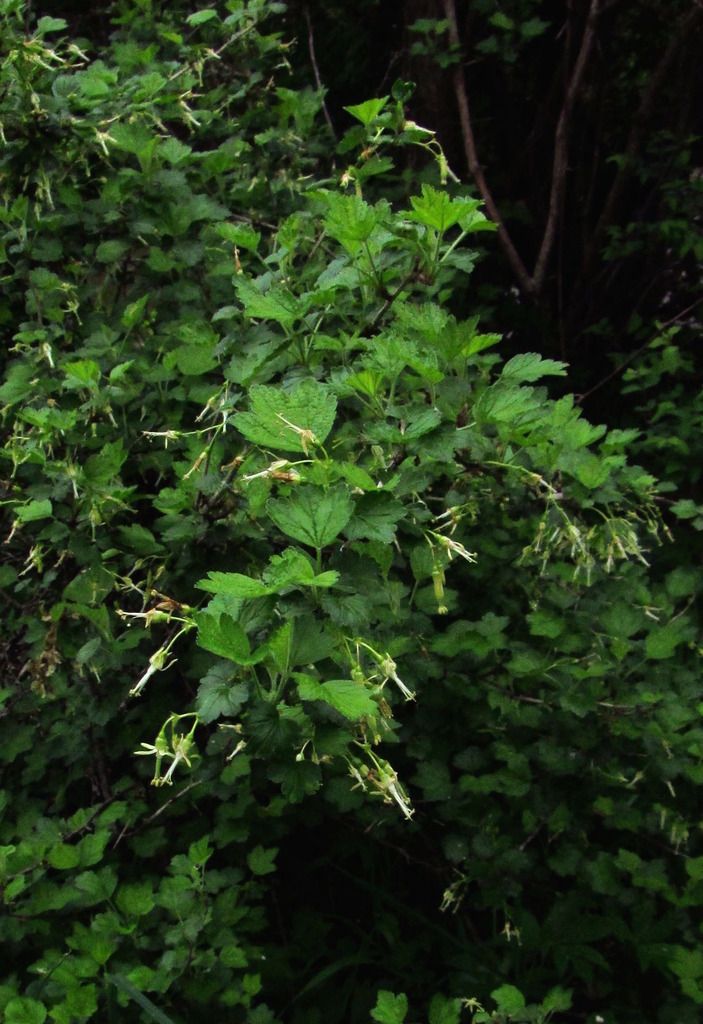
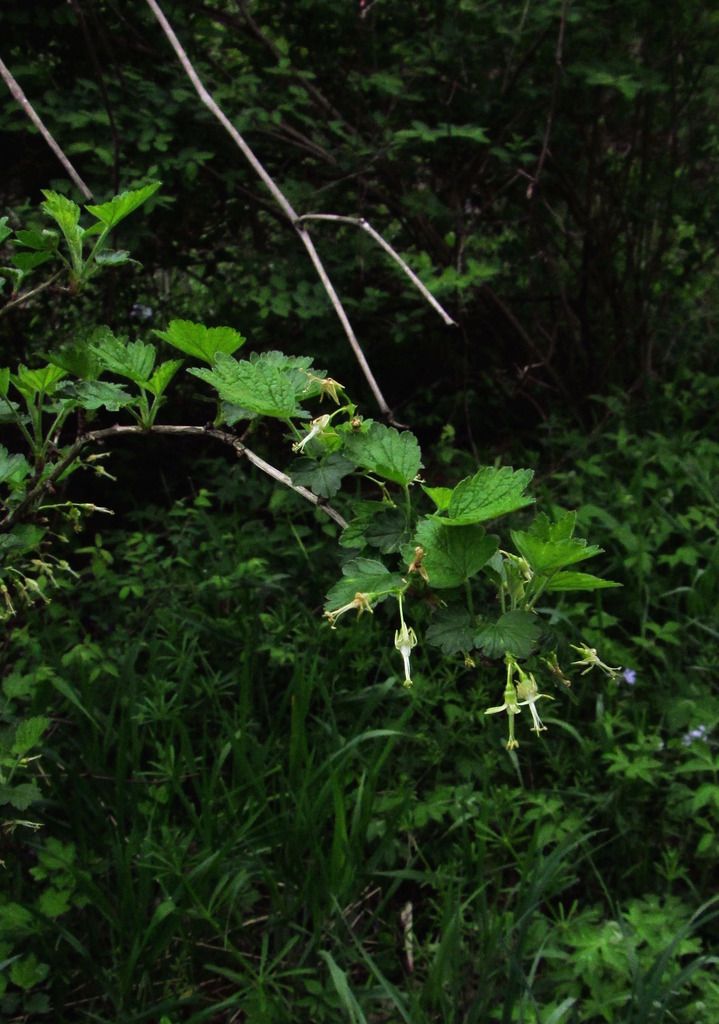
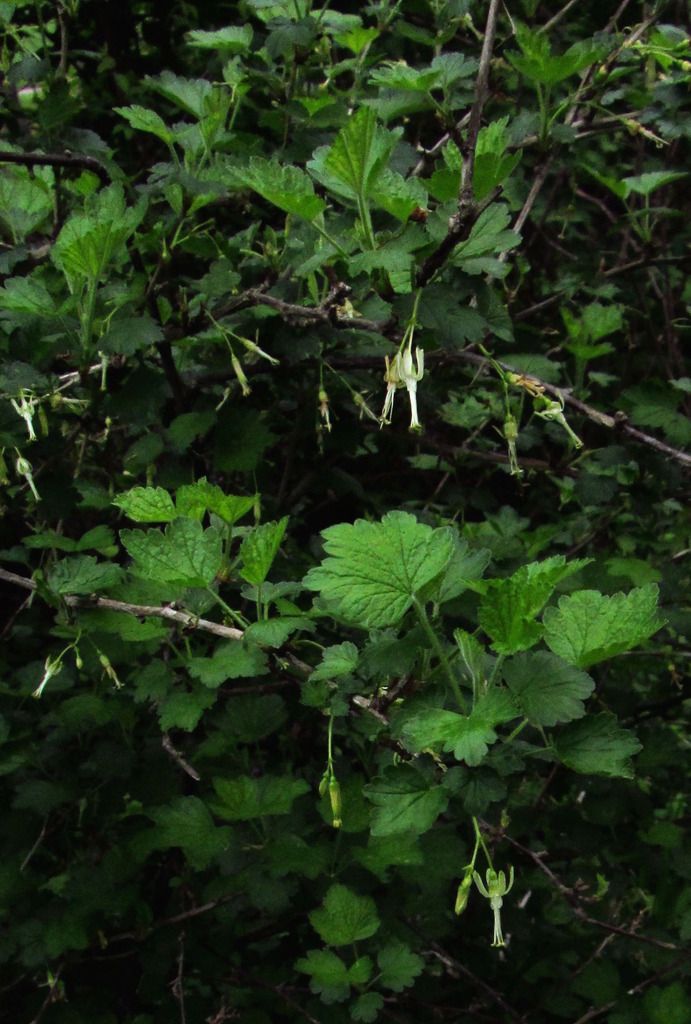
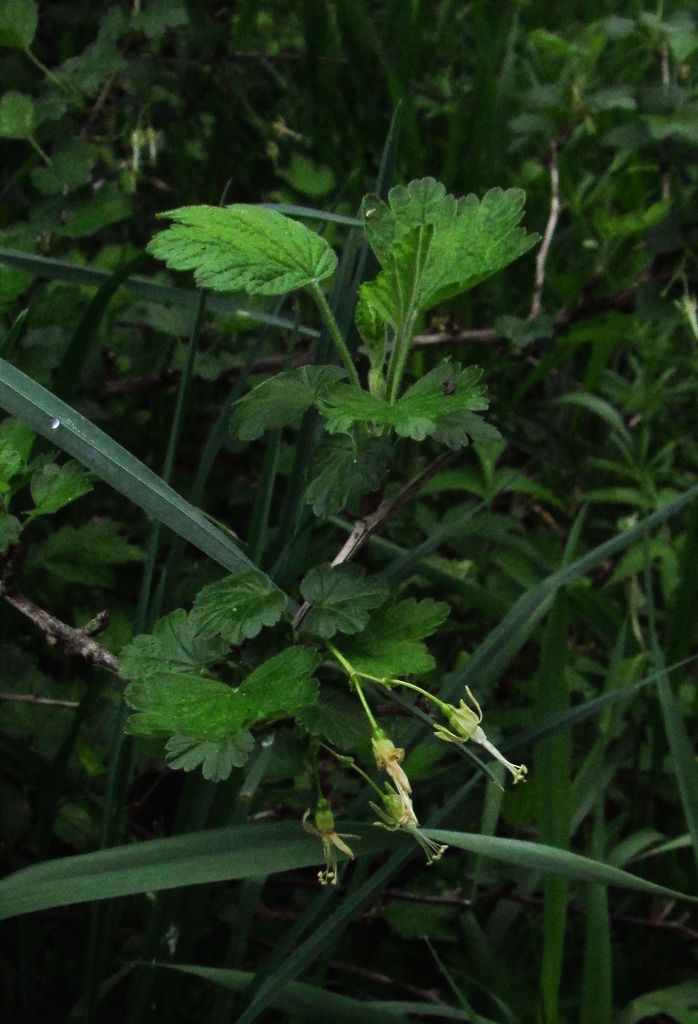
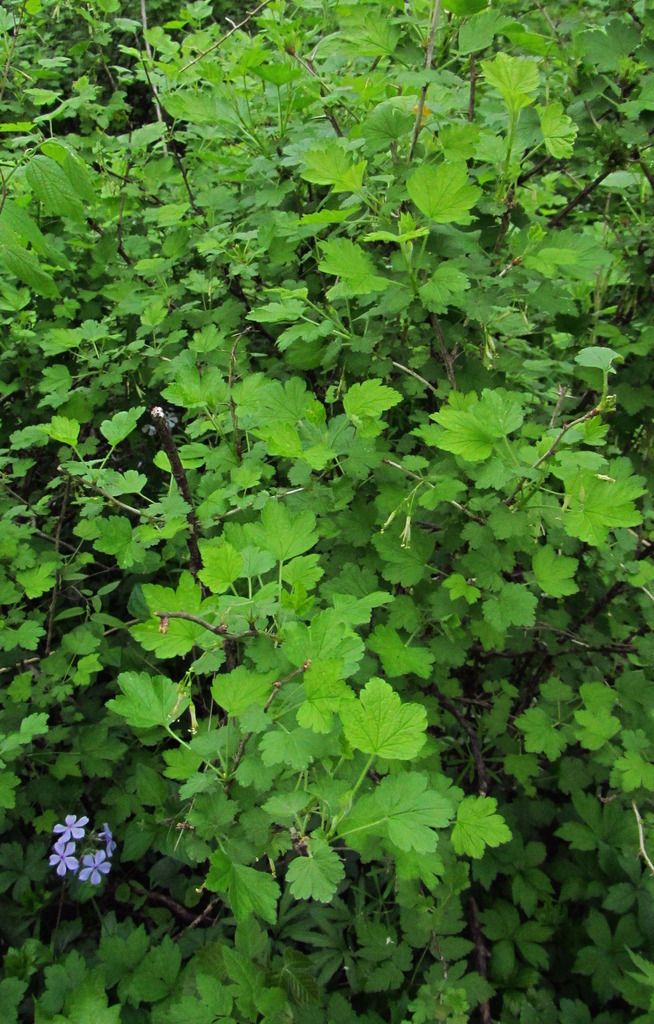
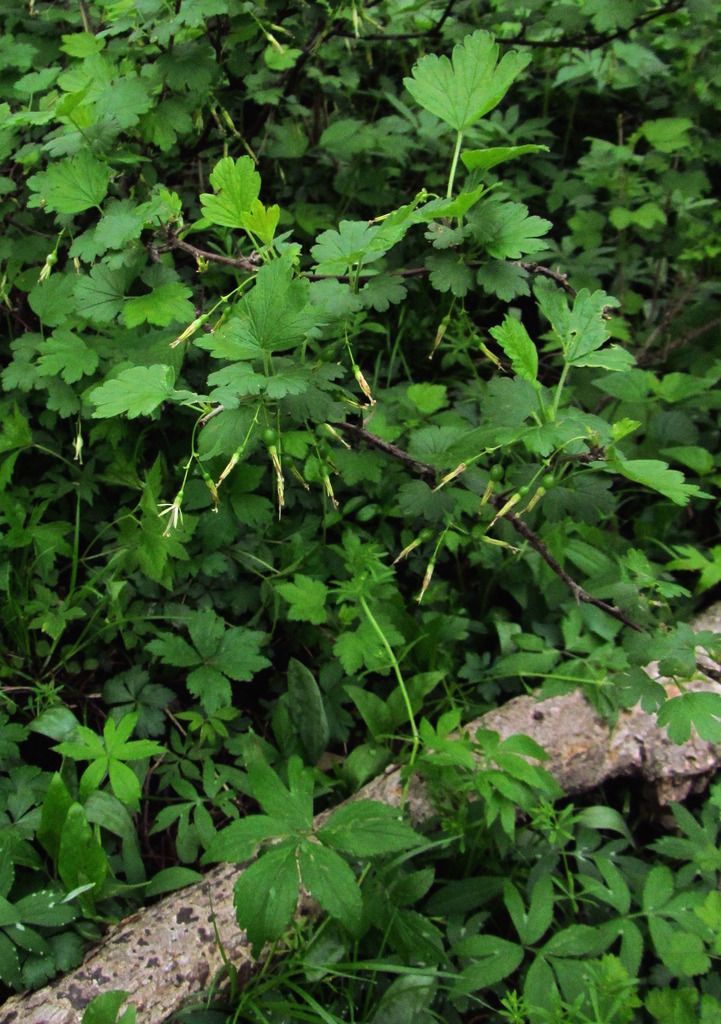
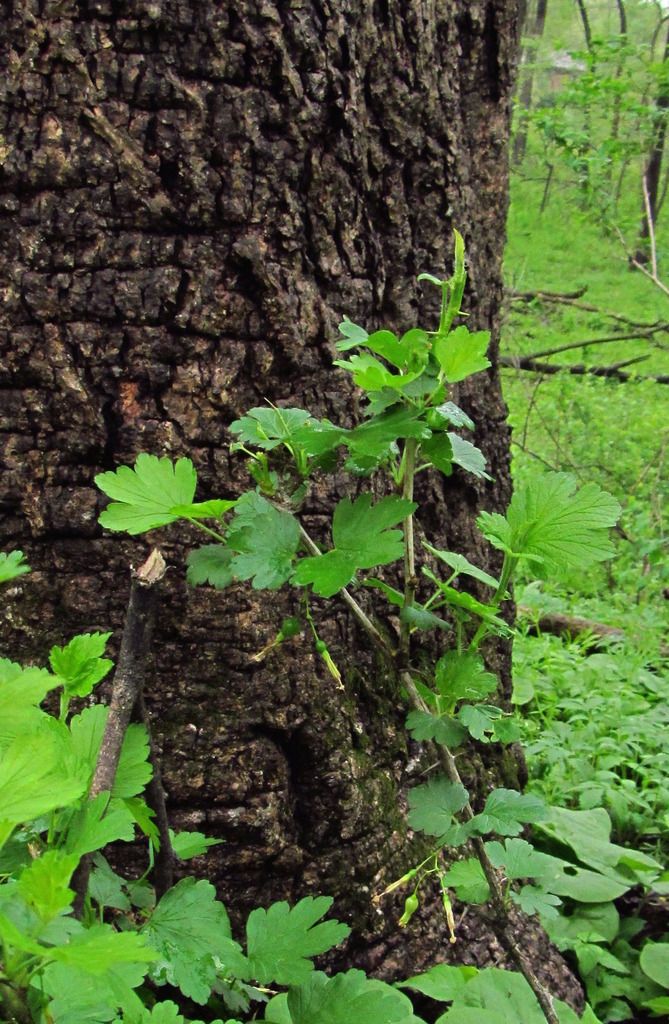
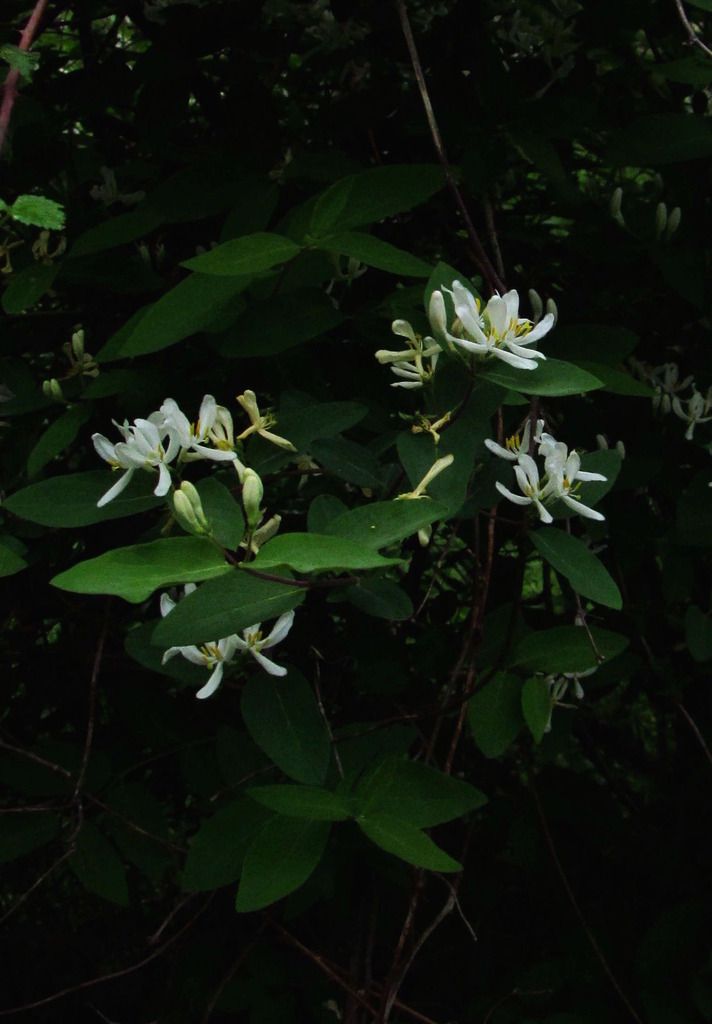
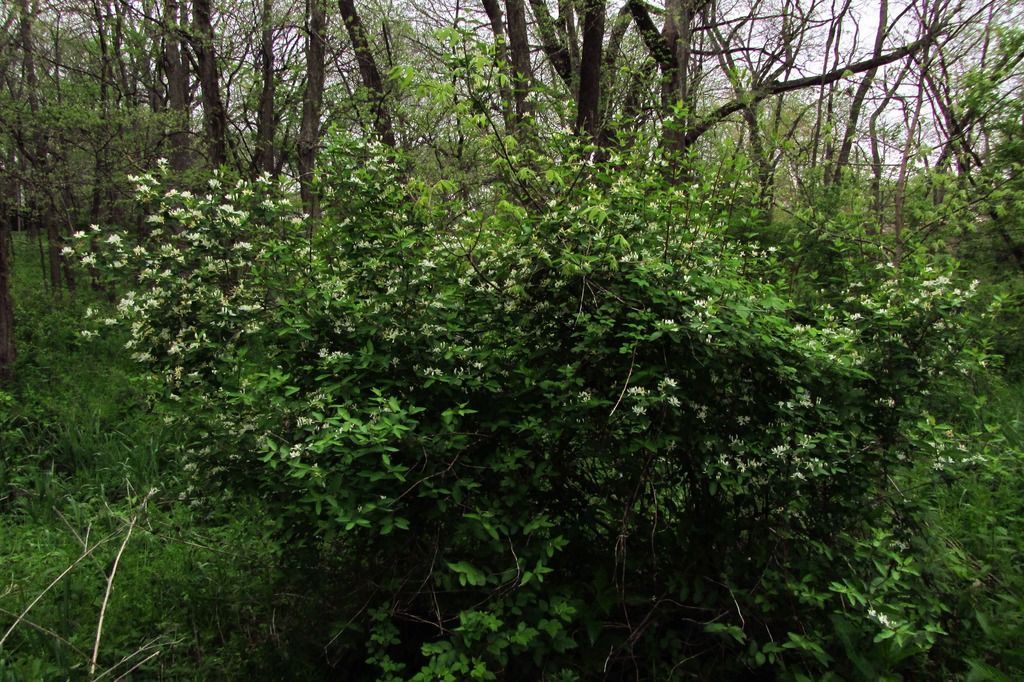
1 Comment
Asian bush honeysuckle, alas...
…is now such an ecological plague that the Iowa DNR is experimenting with aerial spraying to try to stop it from completely taking over some southern Iowa grassland areas. It’s considered by some land managers to be the worst invasive exotic in the Midwest, though I bet some would argue that honor belongs to garlic mustard.
PrairieFan Tue 2 May 9:27 PM